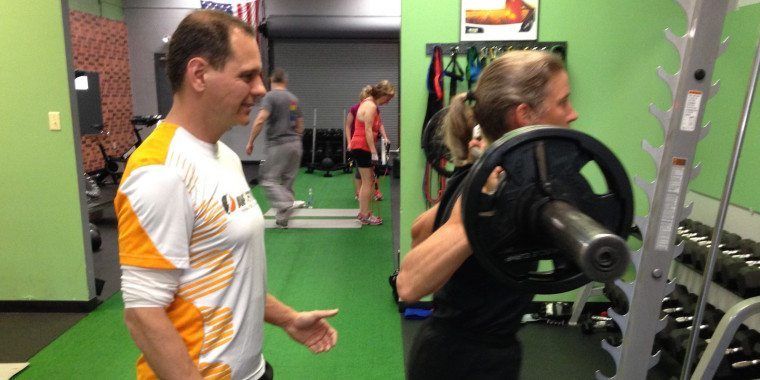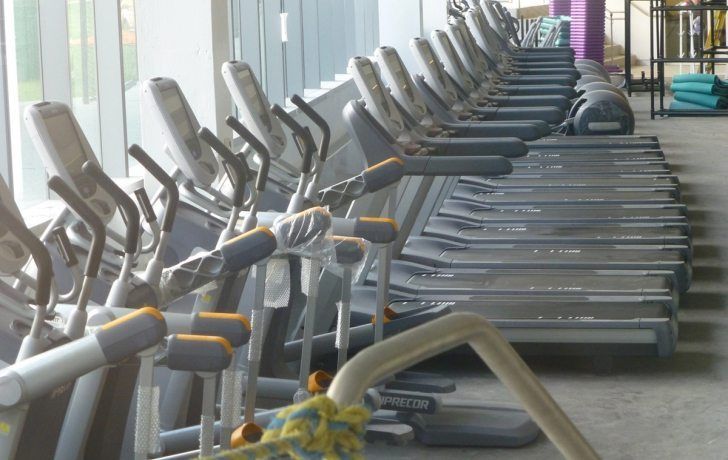Resistance training is a form of physical activity that is designed to improve muscular fitness by exercising a muscle or a muscle group against external resistance.
According to the American College of Sports Medicine, resistance training is accomplished through the use of traditional free weights and dumbbells, weight machines, body weight, elastic tubing or medicine balls. At AMP Fitness, our personal coaches choose the right equipment to match the physical fitness level of each individual client (there is no “one size fits all approach”).
For example, clients that are just starting out may do more of their resistance training through machine-based exercises to help them safely learn the movements. Over time, free weights are incorporated as each client increases their muscle fitness.
Two key variables in resistance training are the number of repetitions per set and the amount of weight used, with higher repetition sets (even at lower weights) developing the muscle’s ability to work continuously for a longer period of time, or what is known as muscular endurance.
Developing muscular endurance helps to prevent injuries and promotes greater efficiency of movement. High-repetition endurance training is also beneficial for anyone who wants to improve muscle function with minimal increase in muscle size.
Resistance training can also help tone the body, and increase muscle mass, through a process known as hypertrophy. Usually, the weight selected will be lifted eight to 12 times to achieve muscle exhaustion, for two, three or four sets. Building larger, stronger muscles will help you develop a toned, athletic body, improve your performance, prevent injuries and increase your overall resting metabolism.
If you have specific resistance training goals, it is important to follow a progressive training program. According to the American College of Sports Medicine, progression is “the act of moving forward or advancing toward a specific goal over time until the target goal has been achieved.”
You can make progress in your workouts with specific trainable characteristics of muscular fitness, such as strength, power, hypertrophy and local muscular endurance. While all four of those factors will improve with almost any properly designed resistance training program, you will maximize your results by properly modifying the amount of weight lifted; the total number of exercises, repetitions, and sets that are performed in a given exercise session; the rest period between sets, and the frequency of each workout.
It is important to remember that when you are first starting out you will experience a relatively rapid increase in strength that often is followed by a plateau of improvement. After you hit that plateau, any gains you make in muscle strength and size will be hard earned.
Over time, however, you muscles will respond to continuous resistance training by increasing in size, so don’t be discouraged if you hit a plateau — it is actually an encouraging sign that gains in muscle size are soon to follow.
Varying your workouts can help you push past a plateau. The theory of variation is that you can coax growth and strength from your muscles by surprising them with a range of different stresses. The muscles will respond in size and strength as they are forced to adapt.
To learn more about the benefits of resistance training workouts, give us a call at 216-831-3674.
(Information for this article was sourced from
Better Health and
livestrong.com)












